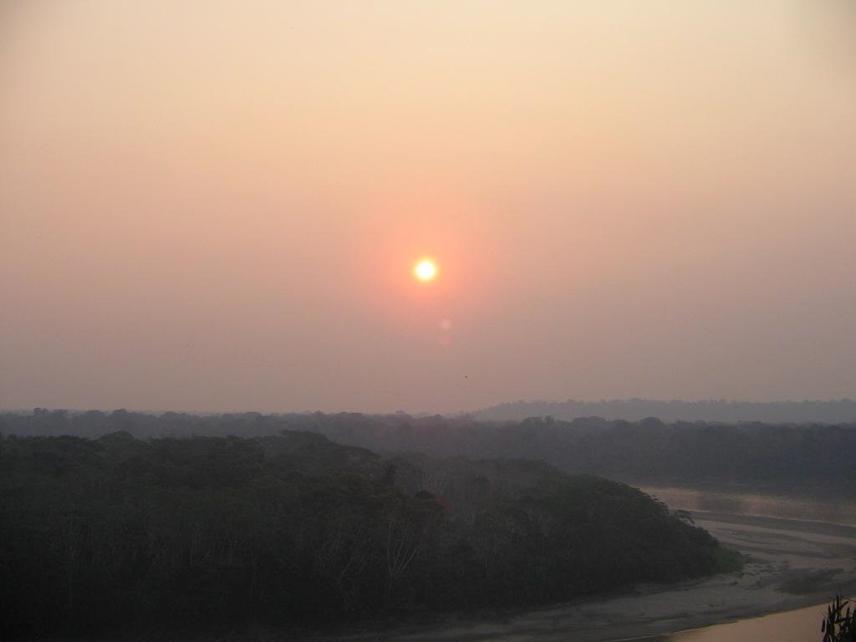Luis Suarez
Other projects
This project aims to determine the influence of transboundary air pollution, related to biomass burning, in Central and Southern Peruvian Amazon, where information is scarce and it could produce adverse consequences to the climate and the atmospheric chemistry of the region.

Southern Amazon covered by smoke during burning season.
Global concern is focused to biomass burning in the tropics because is an important source of pollution to the atmosphere with different and not well understood consequences to the climate and the atmospheric chemistry. Fires are linked to deforestation and are produced all over Amazon mainly related to land use cover change. During the dry season (May to November) high amounts of fires are produced in all over central Amazon. The resulting pollutants are mainly: carbon dioxide, carbon monoxide, nitrogen oxides, and particulate matter, among many other compounds. These pollutants, under some meteorological conditions, could travel long distances from sources.
Considering that the biggest number of produced fires occurs in central Brazil, about 50000 fires detected by satellites during 2005 and 2006, it is important for western Amazon the evaluation of transboundary air pollution and evaluate the possible adverse effects on air quality and climate. In that sense this proposal focuses the detailed evaluation of the transport of aerosols (particulate matter with diameter smaller than 10 um) and tropospheric ozone, a secondary pollutant that is produced far away from sources. Both are important indicators of air quality and climatic issues.
Main activities of this proposal are related to work with remote sensing and chemical analysis. Satellites will be used to obtain levels of pollution over the Amazon basin, focusing western Amazon (lowland and highland Amazon). Data for carbon monoxide, nitrogen oxides and aerosols are possible to obtain from satellites mainly operated by NASA. Information of fire pixels products developed by Dr. Alberto Setzer from CPTEC Brazil will be used, as indicators of forest fires in Brazil and Peru. In both data sets there are at least about 5 years of records. On the other hand, in situ measurements will be performed in three locations of western Amazon (northern, central and southern locations) in a monthly basis considering two contrasting seasons: dry and wet ones. These special campaigns will be done for collecting aerosols with a Stacked Filter Unit (SFU), used widely for researchers of this topic, for later analysis of elemental composition, up to 30 elements by Inductively Coupled Plasma (ICP) technique.